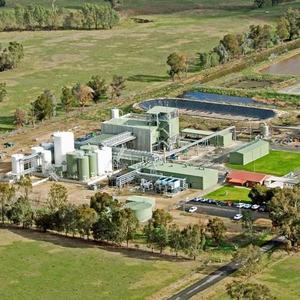Australian biodiesel plant reopens under new ownership

Photo: Just Biodiesel Pty Ltd
July 18, 2019
BY Ron Kotrba
The former Australian Renewable Fuels plant in Barnawatha, Victoria, a 13.2 MMgy biodiesel manufacturing facility, has restarted operations under the new ownership of Just Biodiesel Pty Ltd.
Formation of Just Biodiesel was finalized in December following the purchase of the mothballed plant from the receiver, KordaMentha, in May 2018. ARF had filed bankruptcy and shut down operations more than three years ago.
After a successful recommissioning and startup phase, Just Biodiesel began shipping biodiesel in June. Eleven out of 16 former employees of the facility have returned to work at the newly owned biodiesel plant.
Advertisement
According to Just Biodiesel, the company will supply the Australian market with B5 and B20 in partnership with distribution companies Refuelling Solutions and Viva Energy Australia. The company will also ship B100 made from tallow and used cooking oil to customers in California and the EU.
Advertisement
Related Stories
The USDA maintained its outlook for 2025-’26 soybean oil use in biofuel production in its latest World Agricultural Supply and Demand Estimates report, released Aug. 12. The forecast for soybean oil prices was also unchanged.
U.S. soybean production for 2025 is forecast at 4.29 billion bushels, down 2% when compared to last year, according to the USDA National Agricultural Statistics Service’s latest monthly Crop Production report, released Aug. 12.
Marathon Petroleum Corp. on Aug. 5 released second quarter financial results, reporting improved EBITDA for its renewable diesel segment. The company primarily attributed the improvement to increased utilization and higher margins.
Chevron Corp. on Aug. 1 confirmed the company started production at the Geismar renewable diesel plant in Louisiana during the second quarter after completing work to expand plant capacity from 7,000 to 22,000 barrels per day.
California’s new specified source feedstock attestation requirement: A critical new compliance step for renewable fuel producers
As of July 2025, California’s SCFS requires renewable fuel producers using specified source feedstocks to secure attestation letters reaching back to the point of origin. This marks a significant shift in compliance expectations.
Upcoming Events










